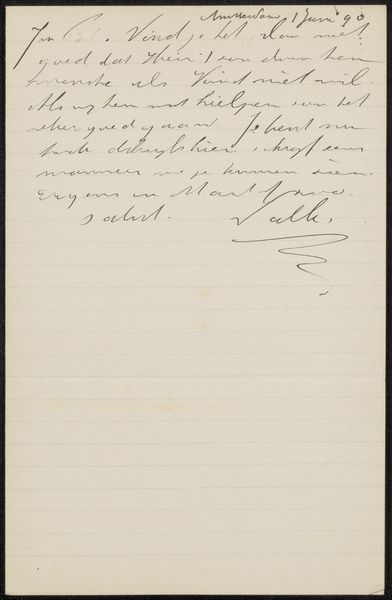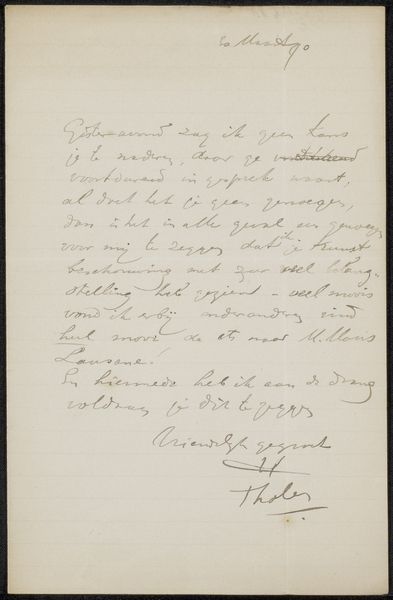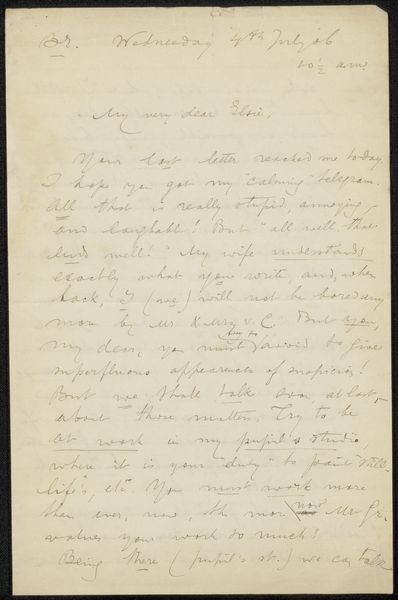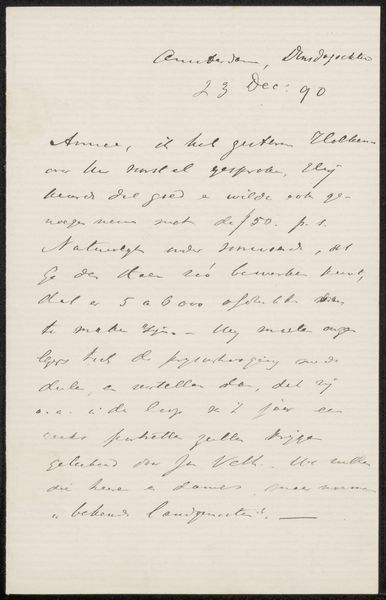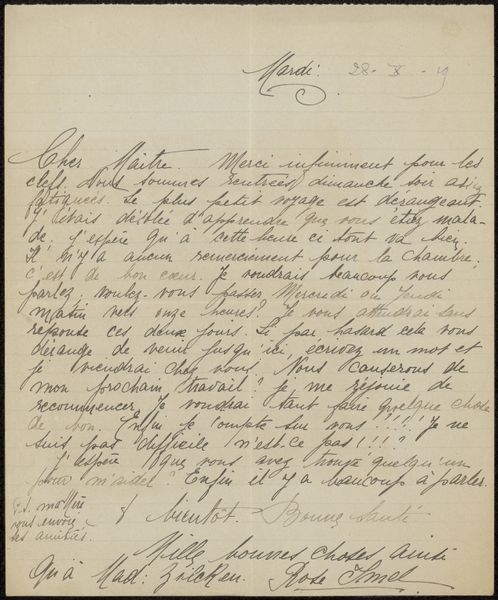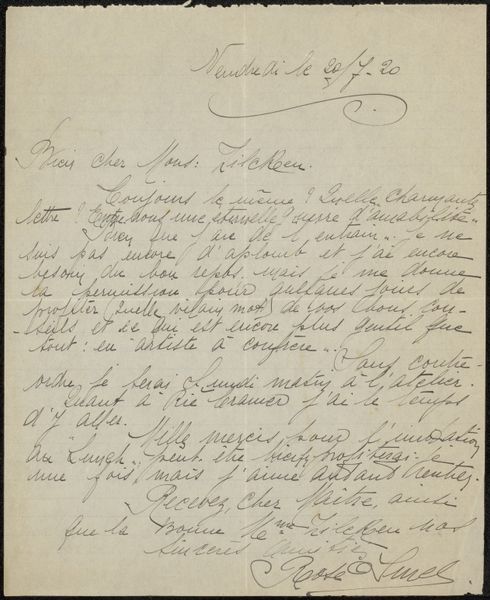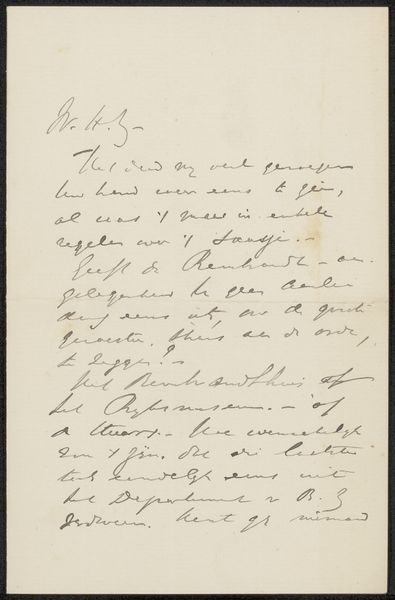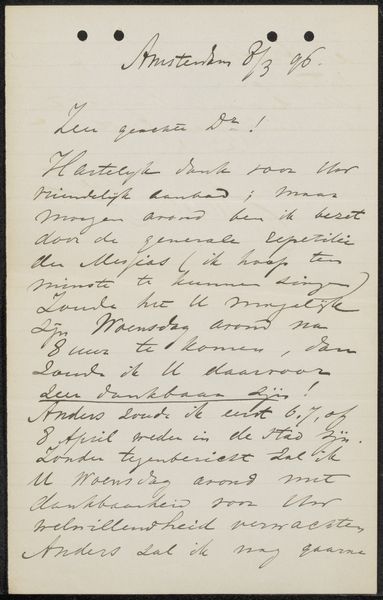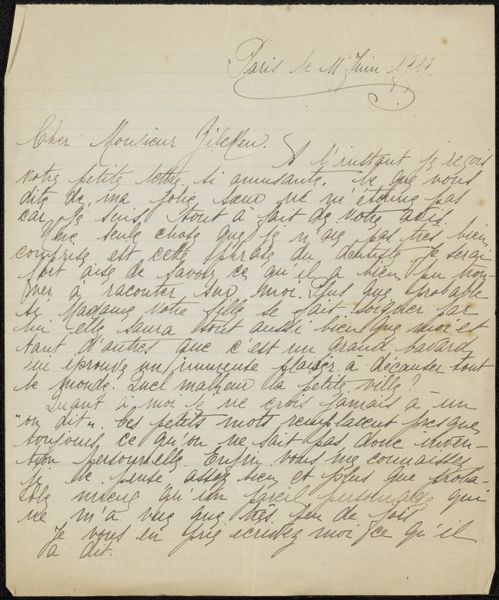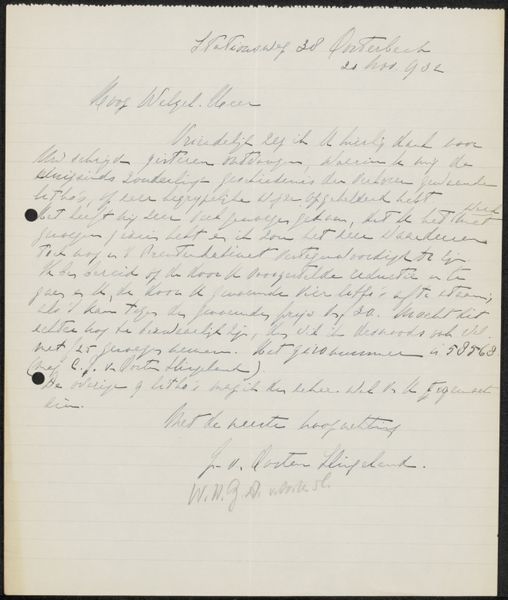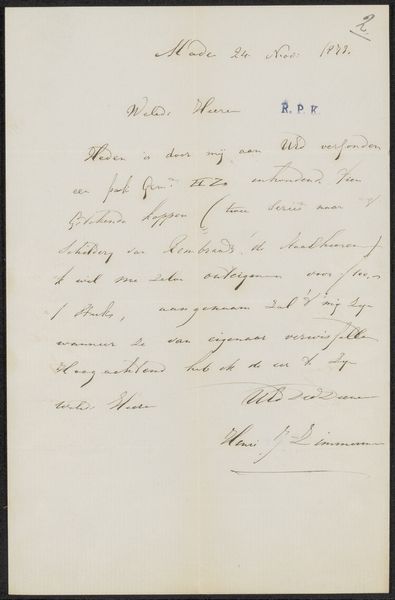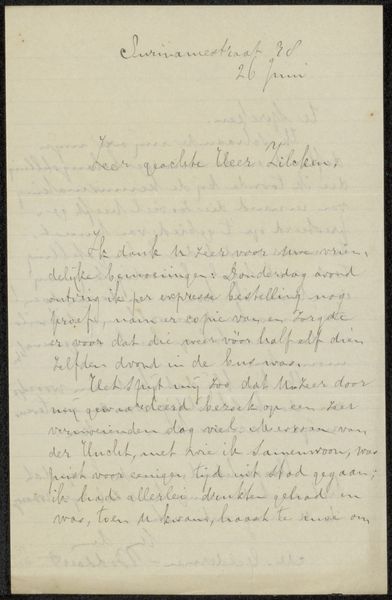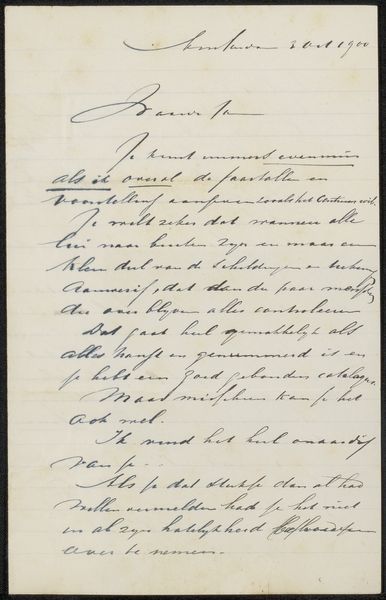
drawing, paper, ink, pen
#
drawing
#
paper
#
ink
#
pen
#
calligraphy
Copyright: Rijks Museum: Open Domain
Curator: This is Maurits van der Valk's "Brief aan Jan Veth," created sometime between 1874 and 1925, using ink and pen on paper. It’s currently housed at the Rijksmuseum. Editor: It’s a handwritten letter. The script itself almost becomes an abstract pattern across the page. I’m immediately curious about what's written – it feels very intimate. What social dynamics might be revealed in something like this? Curator: Exactly! It's fascinating to consider a letter like this as a cultural artifact, right? Not just for the content, but for the very act of writing it, for the relationship it implies between Van der Valk and Veth. Consider who had the privilege of literacy and correspondence during this period. How does class play into the social discourse shown here? Editor: I never thought about it like that before! The flow of correspondence was dependent on one's access. Does the script, the calligraphic style, hint at their social standing or education? Curator: Precisely. Calligraphy was a skill, a marker of status and education. Think about the labor involved in writing by hand. Letters became powerful objects and connections. Consider how queer communities, for instance, historically used letters as a vital form of communication and identity formation in times of censorship or oppression. Editor: So this letter is more than just a personal message; it’s a historical document embedded with socio-political implications. Curator: Yes! By analyzing these subtle details like handwriting and medium, we can unpack larger societal power structures and understand interpersonal dynamics. What assumptions can we now check based on Van der Valk's letter? Editor: I see how deeply intertwined art, communication, and societal contexts really are! Curator: And hopefully we continue to find ways to unravel even more in works like these.
Comments
No comments
Be the first to comment and join the conversation on the ultimate creative platform.
